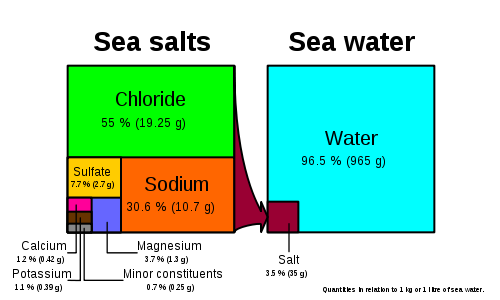Salinity of water, measured in g/L, or thousandths (ppt), includes mainly sodium chloride NaCl, and other are calcium salt, magnesium salt, potassium sulphate and bicarbonate salts.
Each type of shrimp requires different levels of salinity; the requirements vary from time to time in its life cycle.
Shrimp can adapt to gradual changes in salinity.
Salinity which is higher than 35 parts per thousand (ppt) will make the color of water become bold. It also makes it more difficult to adjust the color of water in shrimp pond.
Black tiger shirmp:
This species can tolerate a range of salinity from 3 to 45 parts per thousand (ppt). Salinity which is best for black tiger shirmp is from 15 to 20 ppt. Salinity fluctuation during the day should not exceed 5 ppt/day.
If salinity is lower than 5 ppt, it is necessary to provide vitamins, minerals, vitamin C in feed for shrimp, especially for shrimp over 45 days old.
If salinity is higher than 35 ppt, shrimp will eat less, stop eating and grow slowly.
Black tiger shirmp in larval stage (including zoea and mysis), postlarvae, juvenile and mature stages can live in water whose range of salinity is wide.
Whiteleg Shrimp:
Whiteleg shrimp can tolerate salinity from 2 to 40 ppt. The best salinity for this species is from 10 to 25 ppt.
Seawater:
Seawater has a salinity of about 31-38 g/L (ppt).
Salinity of seawater varies depending on the sea area, depth and temperature.
The density of surface seawater is from 1.020 to 1.029.
pH of seawater is about 7.7 to 8.4.
Chemical composition of seawater:

Figure: Wikipedia
© 2014 Viet Linh